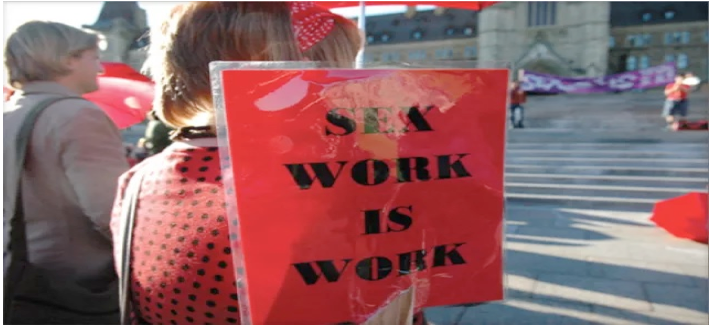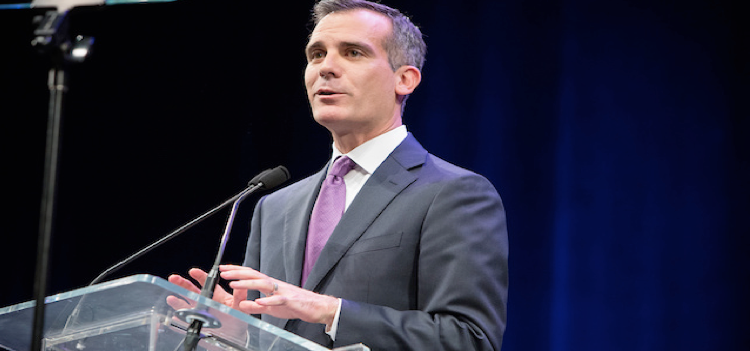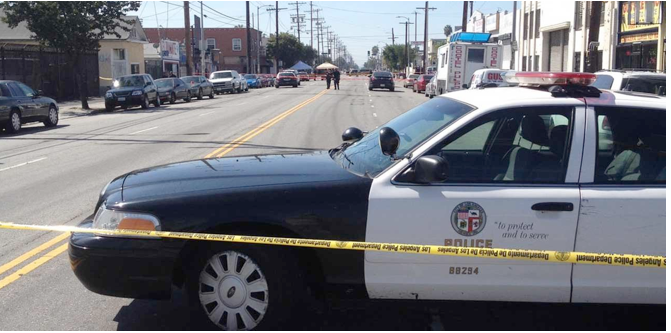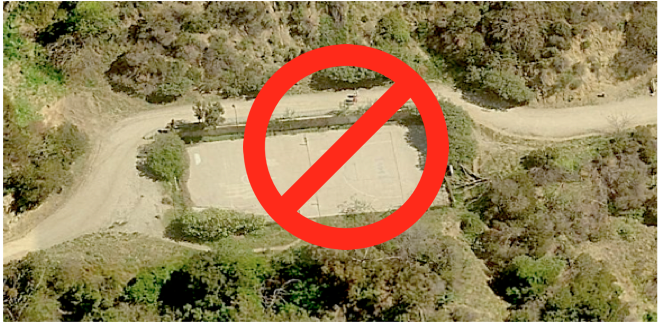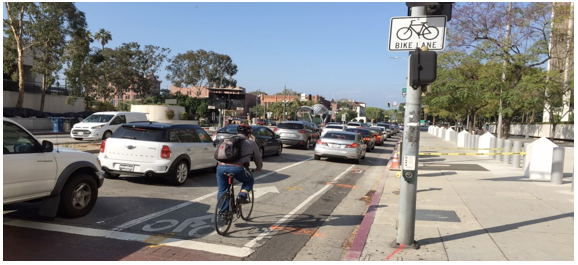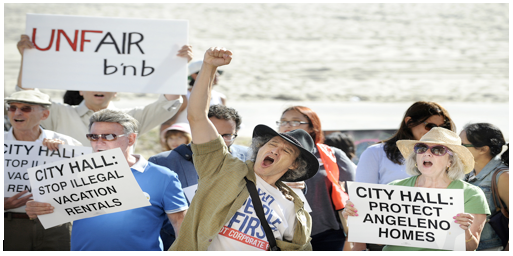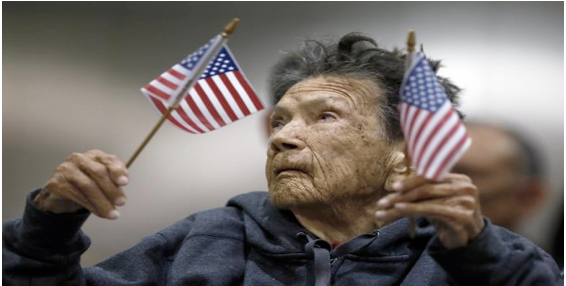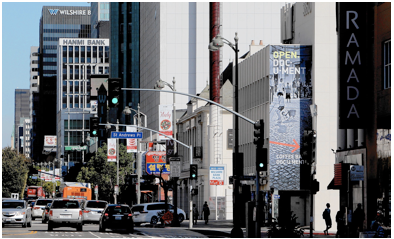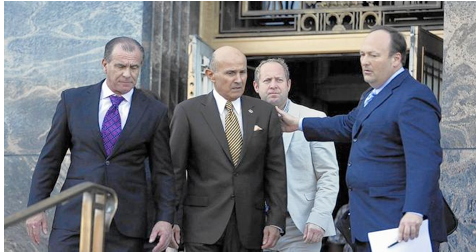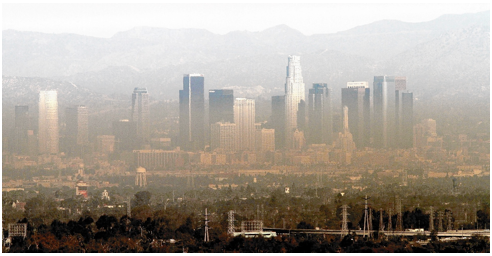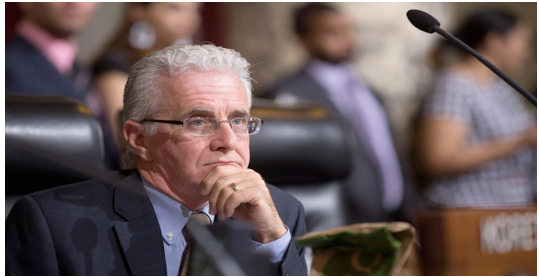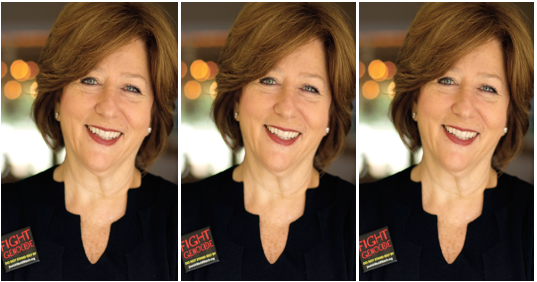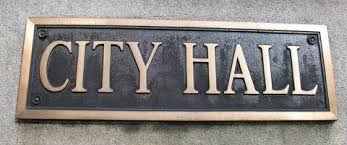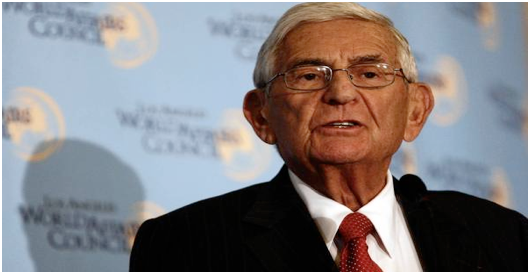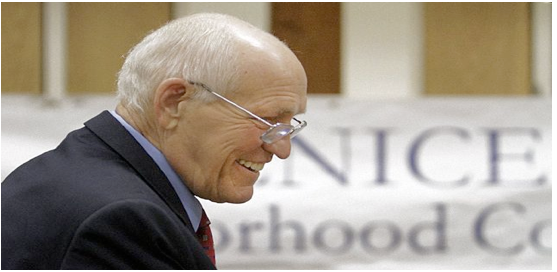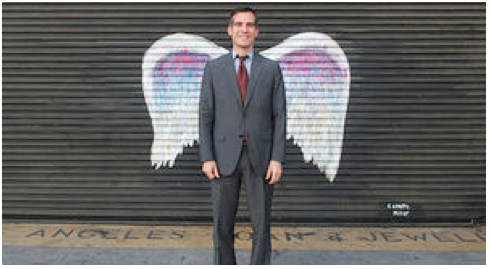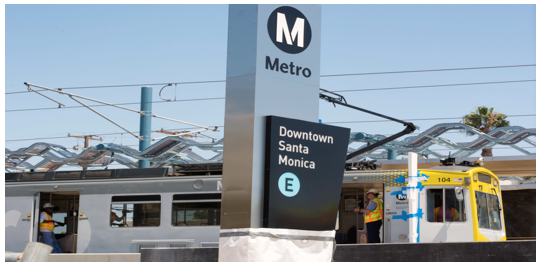DEEGAN ON LA-It suddenly looks like Runyon Canyon Park may be morphing from being a regional wilderness park hosting 300,000 dogs and 1.3 million people per year into what may become it’s opposite: an urban recreation and sports center, with amenities that include the installation of a professional-level basketball court, the existing hiking trails, and a feared-to-be modified dog park.
It may also have a precedent-setting corporate sponsorship and branding agreement, that could be the first of many times the Department of Recreation and Parks, and their partner Friends of Runyon Canyon (FORC), make cash deals for corporate naming rights in the park. Growing pains are already evident.
The explosion of Runyon Canyon’s popularity is relatively new, according to regulars, and it is drawing attention from many constituencies -- including the Hollywood Hills West Neighborhood Council and surrounding community, the private non-profit support group Friends of Runyon Canyon, the Rec and Parks special department handling corporate sponsorships in our parks, and beleaguered Councilmember David Ryu (CD4), who both inherited the current problem and then got whipsawed by a plan for a possible conversion of the hillside park from being a peaceful and sylvan retreat, away from the dense urban sprawl surrounding it, into what a forthcoming “Vision Plan” hopes to be able to create at the nature preserve..
A statement from Ryu’s office has just been released:
“Per my request, the Department of Recreation and Parks will halt construction of the proposed basketball court at Runyon Canyon Park. The department also agreed with my recommendation to have the Board of Recreation and Parks Commissioners reconsider its prior approval of this project.
This project was initiated before I became the Councilmember of the Fourth District and it is clear that community concern regarding this project needs more robust consideration prior to any further action.”
The park has been open since 1984, although, “nobody used to care. But now with the celebrity thing, people want to have that rub off...it's got buzz as hip and cool, to be able to go home and say I saw a star at Runyon Canyon,” explains Daniel Overberger, an 11-year yoga teacher at Runyon Canyon.
The proposed basketball court, a sponsored gift by a hip clothing company that wants to brandish its logo on the court, stating that its product line is “unique and ingenious…embodying exclusivity." It wants to reach who they believe are the hip consumers who use the park.
According to the contractor’s documentation, it is called a “basketball facility” and includes a “regulation-sized tempered glass backboard - same exact piece of glass used all the way up to the NBA level.” The new court will “bring an authentic arena feel to the backyard.”
So then how do you mix together dogs, hikers, yoga, and a basketball facility that mimics NBA standards and feels like an arena? This is giving people lots to talk about. The future of corporate commercialization of the park is uncertain, although that has been strongly denied by city officials. However, the City Council has not yet pre-empted the building of the court by offering a motion with an ordinance specifically forbidding commercialization and branding in city parks.
The Canyon’s growing pains will take careful nurturing so that all its users will be assuaged and satisfied. Close-by neighbors as well as outside visitors, who according to FORC comprise eighty percent of the park’s users, should be able to benefit from this natural civic resource.
David Ryu and his partners -- Hollywood Hills West Neighborhood Council, Friends of Runyon Canyon Park, the Department of Recreation and Parks, and clothier Pink Dolphin -- have their work cut out for them, responding to feelings that range from anger and near-depression to exhilaration.
Nobody has yet provided a big picture solution to the future sustainability of this 136-acre pristine wilderness park that includes 90 acres dedicated to off-leash dogs, smack in the middle of Hollywood. It’s in one of the most densely populated areas of our city, containing dozens of high density land use projects on the drawing boards. Unless the rhetoric cools down and collegiality heats up, arriving at a consensus about what the park should be is going to be tough. A homogenized view will be the only way all parties can emerge feeling whole. Give and take will be needed to reach a happy medium and move on.
Leadership is required and the responsibility is David Ryu’s, the only elected official who is directly part of this controversy. He is the highest ranking public steward of Runyon Canyon Park. As one regular at the park said, "David Ryu can be the hero or the villain. If he does what the people want, he can be the hero of CD4. If he doesn't, his career is finished."
Ryu can facilitate a conversation concerning the public and private partnership concept to help explain its needs and the benefits. He has had “town hall” meetings with the community about the Hollywood sign, the Griffith Park circulation plan to improve parking and utilize shuttles, and how Metro can manage traffic for the Miracle Mile as construction of the Purple Line Extension gets under way.
To gain a stronger buy-in from community members, the public needs to understand how envisioned private-public partnerships can offer funding for improvements for city parks. Guidelines need to be set for what donors can expect, short of branding and commercialization. Underwriters should be philanthropists, not merchants.
Ryu knows how to organize and lead community groups to reach consensus. Partnering with Recreation and Parks leaders, there should be an effort to provide education about the private-public partnership program. Creating what charities rely on as “best practices” could be very helpful.
There are potentially millions of human visitors and dogs coming to Runyon Canyon in the next several years and the park and the community must be ready for them. As our city continues to densify, parks will grow increasingly important as a refuge from the urban confinement that surrounds most of us.
To complicate things, a lawsuit has been filed by Citizens Preserving Runyon, against the Board of Recreation and Park Commissioners; respondents were named as being Friends of Runyon Canyon (FORC) and contractor B&W Holdings, LLC, dba, Digital Interiors, the company awarded the job to construct the basketball court as well as other jobs.
According documents filed with the Clerk of the Los Angeles Superior Court on April 18, the lawsuit asks:
(1) That the Court issue a writ of mandamus directing the City and its departments, including Recreation and Parks, to set aside their approval of the Project and to require preparation of a legally adequate environmental review, as well as adequate notice and a hearing, before any re-approval of the Project;
(2) For a temporary restraining order, and preliminary and permanent injunctions enjoining further construction and completion of the Project until this action can be decided on the merits;
(3) For costs of suit and attorneys' fees according to law;
(4) For such other and further relief as the Court may deem just and appropriate.
Litigation is either settled or it drags on. If an EIR is ordered, the process could go on for many months. This will give plenty of time for considerations about “the deal” at the center of the controversy -- how it came about and what legitimacy it has in light of the public outcry against political leaders and park officials. The lawsuit alleges a failure by the City to give the public “due process” consideration – many saying that they did not want the basketball court but were not given a chance to weigh in.
The donation of $260,000 by clothier Pink Dolphin includes $122,534 for repair of a retaining wall, according to MOU documents obtained from the City, showing the bid from contractor Digital Interiors. Unknown, but possibly discoverable in the lawsuit, is how many contractors actually bid for the job and where Digital Interiors’ bid fits into the range of bids received. The document shows that the contractor is contributing a drinking fountain, valued at $9,800 as a “discount” to the overall bill.
Important to note is that there is that no free-and-clear cash benefit will accrue to the city from this donor transaction. The total amount of $260,000 is allocated to costs. Increasing the value of this or any gift might be a better philanthropic gesture, allowing the city to reinvest additional funds into other park needs. This could also help offset the perpetual benefit the donor gets from a permanent branding of the basketball court, displaying its corporate logo in the park. Despite the fact that their maintenance endowment will only run ten years, their logo will remain as a permanent commercial.
An added benefit for the donor would be a larger tax-deduction for charitable giving. The value of what is being branded by a corporation -- a sports facility in a very popular city park -- may have been very seriously underestimated.
Perhaps LA Recreation and Parks Department’s Partnership and Revenue Branch could use instance as a precedent in the future: paying costs and gaining a surplus for other park needs should be part of all sponsorship negotiations.
How hard of a deal did the Rec and Parks department and FORC try to make behind closed doors, or did they settle for the first quarter-million dollars that walked in the door? It seems that, from reading the contractor’s documentation, the contractor may have said, “This is what it will cost you,” and the city said to the donor, “This is what we need to pay the contractor.” If so, that’s a “passing the tin cup” style of fundraising, just to get by, instead of setting a higher threshold and saying “we’re worth it.”
A trained and experienced development officer from a major philanthropic institution (and our city is full of them) could lead the sponsorship negotiations for the city. Setting the bar higher is something to consider for either permanent staff or for consultants providing training on how to raise money for charities. It may be unfair to expect program managers and analysts in the city’s bureaucracy to understand the complications of successful fundraising. More growing pains.
It should be a civic pleasure to support our great city. Feeling of a little bit of financial pain comes along with the benefit of a sponsor’s branding, promotion and tax write-off. Donors need to understand that they are playing in the Big Leagues in LA. We cannot be beggars. Ask the Mayor if the City is worth it.
Some question FORC’s role as advocates for the park. “An advocacy organization that encourages heavy construction without an Environmental Impact Report is not fit to protect a Nature Area. An advocacy organization whose violations trigger costly lawsuits from aggrieved constituents has no mandate or moral authority to represent Runyon Canyon. FORC's persistent sneakiness, mendacity and arrogance have destroyed the public's trust,” offers Michael Konik, a 23-year resident of Vista Street and a longtime volunteer trash cleaner at Runyon Canyon.
When he took office nine months ago, David Ryu withheld $600,000 in disbursements to the community earmarked by his predecessor. Ryu will also receive an additional $1 million in discretionary funds for this year, so he could be sitting on up to $1.6 million dollars to use at his discretion. He has formed a Discretionary Funds Task Force to advise him how to support community projects with this bankroll.
Some of that CD4 money, an estimated $122,534, could be budgeted for fixing the retaining wall, considered to be a public safety hazard. This would shift the financial burden from the corporate donor to the well-funded city council office that stewards the park. And it would remove one of the arguments for making the deal with this donor in the first place.
Realistically, if Pink Dolphin needed a new home for its quarter-million-dollar gift there are many charities that would probably jump at the chance to benefit from its philanthropy. Anyway, the company could “bail,” believing that the negative public relations backlash is not worth the “branding” opportunity. They also may not have known how many issues were sidestepped in the rush to accept their money -- and what could be involved with an EIR, if it gets to that stage.
Hollywood legend Francis Ford Coppola has said, “A contract is only a starting point.” It’s not unreasonable to argue that either Pink Dolphin or the city might reconsider what could be seen as a less than favorable deal, especially as the process for arriving at that deal is examined in the lawsuit. There’s also the possibility that the city will lose the lawsuit and the donor deal will die.
Severing the basketball court donation right now might be a preferable option, especially if the retaining wall can be paid for by David Ryu. As long as the branding and basketball court continue to be the main conversation point, it distracts attention from the very serious business of creating a sustainability plan for the park.
If FORC is as good as it looks, money should not be a problem, especially when combined with David Ryu’s approximately $1.6 million in discretionary funds (subject to any allocations already committed by him.) None could be found on his discretionary funds website A request for Ford Theater Trails, appearing in the April 2016 minutes, appears to be in abeyance.
A source that requested anonymity claims that, in addition to the Pink Dolphin donation, FORC collected other donations in 2015 totaling $94,000 ($51,000 in checks, $40,000 through Pay Pal, and some stock donations.) They should have no trouble attracting other sponsors as plans for more park improvements unfold. When they incorporated, FORC’s goal was to encourage not one major donor but many donors to assure the ongoing financial support for Runyon Canyon Park.
The Friends of Runyon Canyon Park have alluded to a “Vision Plan” that will help shape the future improvement and sustainability of the park. This is a critical working document that may be presented soon. When that happens, the whole community will be able to deal holistically with the future of the park, and not just in the wake of the current controversy.
They (FORC) have a chance to work closely with Hollywood Hills West Neighborhood Council, using Councilmember David Ryu as a facilitator -- a role that suits him. Hopefully, that will help as more growing pains emerge.
(Tim Deegan is a long-time resident and community leader in the Miracle Mile, who has served as board chair at the Mid City West Community Council and on the board of the Miracle Mile Civic Coalition. Tim can be reached at [email protected].) Edited for CityWatch by Linda Abrams.

